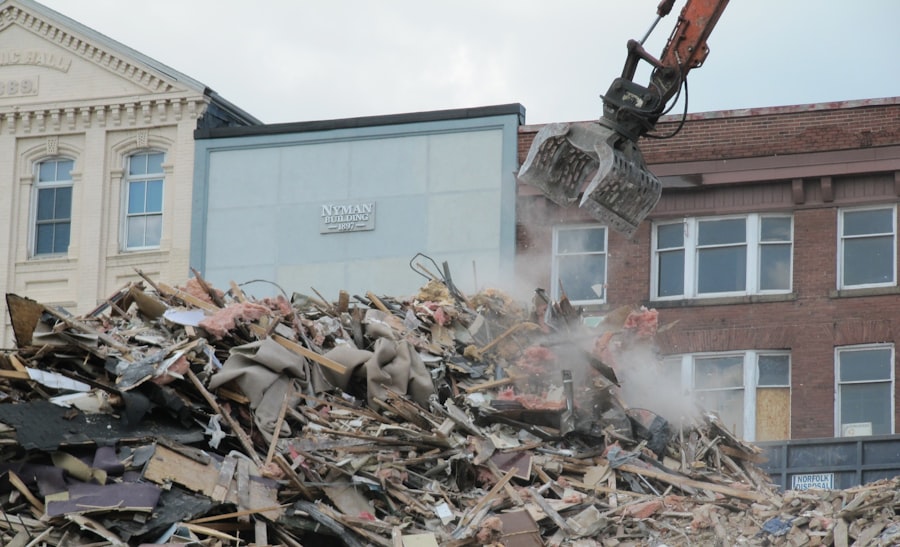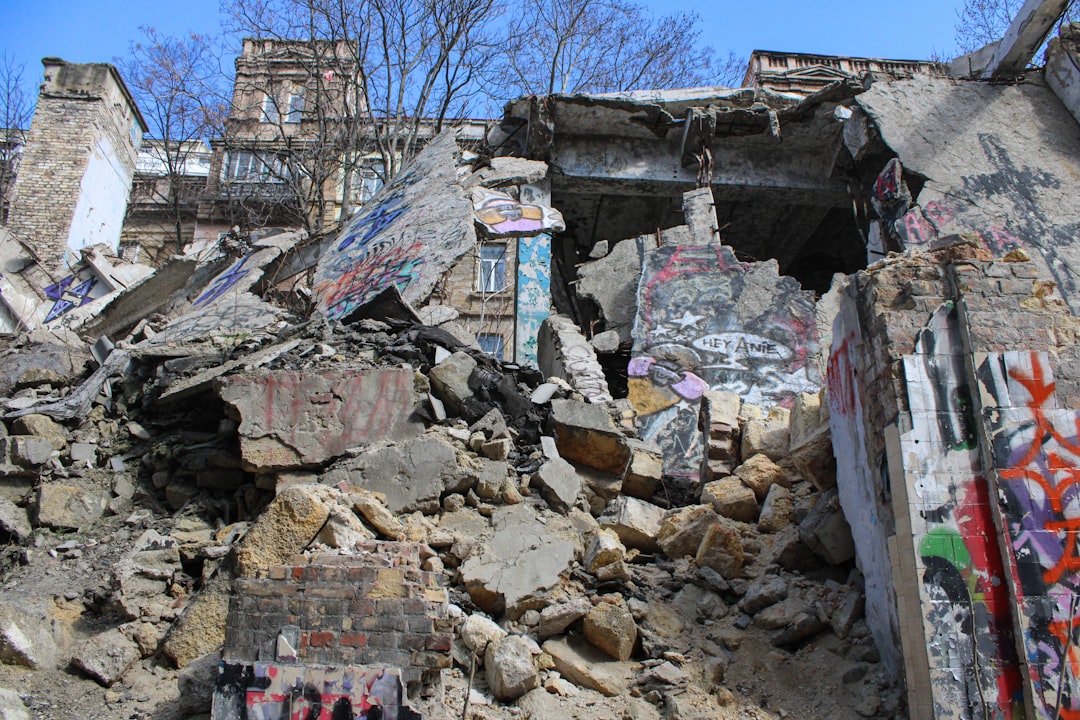In recent months, the Southern Drake Passage has been the epicenter of significant geological activity, culminating in a notable earthquake that has drawn the attention of scientists and environmentalists alike. This region, situated between the southern tip of South America and Antarctica, is known for its tumultuous waters and unique ecological systems. The earthquake, which occurred unexpectedly, has raised concerns about its potential ramifications on both the marine environment and the research stations that operate in this remote area.
As the world grapples with the implications of climate change and natural disasters, this seismic event serves as a stark reminder of the dynamic forces at play beneath the Earth’s surface. The Southern Drake Passage is not only a critical maritime route but also a vital habitat for diverse marine species. The earthquake’s occurrence has prompted a flurry of research and analysis aimed at understanding its causes and consequences.
Scientists are particularly focused on how such seismic events can disrupt local ecosystems and what measures can be taken to mitigate their impact. As the global community continues to monitor seismic activity in this region, the earthquake serves as a catalyst for discussions about preparedness, response strategies, and the importance of international collaboration in addressing natural disasters.
Key Takeaways
- The earthquake in the Southern Drake Passage has raised concerns about its potential impact on wildlife and marine life in the region.
- The earthquake, with a magnitude of 7.0, occurred in a remote area of the Southern Drake Passage, south of South America.
- Nearby research stations have responded to the earthquake with preparedness measures and are monitoring the potential impact on the environment and wildlife.
- Historical seismic activity in the Southern Drake Passage indicates a pattern of tectonic movement in the region, raising concerns about possible future earthquakes.
- International collaboration and support are crucial for addressing the long-term environmental and ecological effects of the earthquake in the Southern Drake Passage.
Location and Magnitude of the Earthquake
The earthquake in question struck in the Southern Drake Passage, an area characterized by its challenging weather conditions and deep oceanic trenches. This passage is known for its strong currents and unpredictable weather patterns, making it a formidable environment for both navigation and scientific research. The earthquake registered a magnitude of 6.8 on the Richter scale, a significant event that has been felt across a wide area.
The depth of the quake was recorded at approximately 10 kilometers beneath the ocean floor, which is relatively shallow for seismic events, thereby amplifying its effects on the surface. Geographically, the Southern Drake Passage serves as a crucial link between the Atlantic and Pacific Oceans, making it an area of interest not only for marine biologists but also for geologists studying tectonic plate movements. The earthquake’s location near the boundary of the South American and Scotia tectonic plates highlights the geological complexities of this region.
The magnitude and depth of the quake have raised alarms among researchers who are now tasked with assessing its immediate and long-term impacts on both marine life and human activities in the area.
Potential Impact on Wildlife and Marine Life

The Southern Drake Passage is home to a rich tapestry of marine life, including various species of fish, seals, and migratory birds.
Such disruptions can have cascading effects on food chains, impacting not only individual species but also entire populations that rely on stable environmental conditions for survival.
Moreover, the earthquake may have immediate effects on breeding grounds for marine mammals and fish. For instance, if underwater habitats are damaged or altered, it could affect spawning cycles and feeding patterns. Researchers are particularly concerned about how these changes might influence species that are already vulnerable due to climate change and overfishing.
The potential for habitat loss or degradation raises urgent questions about conservation efforts in this ecologically sensitive region.
Response and Preparedness of Nearby Research Stations
| Research Station | Response Time (hours) | Preparedness Level |
|---|---|---|
| Station A | 3 | High |
| Station B | 5 | Medium |
| Station C | 2 | High |
In light of the earthquake’s occurrence, nearby research stations have activated their emergency response protocols to assess any damage and ensure the safety of personnel. These stations play a crucial role in monitoring environmental changes and conducting scientific research in one of the most remote areas of the world. The preparedness of these facilities is vital not only for their own safety but also for the broader scientific community that relies on their data.
The response efforts include conducting structural assessments of research buildings, ensuring that communication systems remain operational, and coordinating with local authorities to monitor any potential aftershocks. Additionally, researchers are mobilizing to collect data on marine life in the aftermath of the quake to better understand its impact on local ecosystems. This proactive approach underscores the importance of preparedness in mitigating risks associated with natural disasters in remote locations.
Historical Seismic Activity in the Southern Drake Passage
The Southern Drake Passage has a history of seismic activity that reflects its position at a tectonic boundary. Historical records indicate that this region has experienced several significant earthquakes over the past century, although many have gone unreported due to its remote location. Understanding this historical context is essential for scientists who seek to predict future seismic events and assess their potential impacts.
Geological studies suggest that the tectonic plates in this area are constantly shifting, leading to periodic earthquakes. The frequency and intensity of these events can vary widely, influenced by factors such as oceanic currents and geological formations. By analyzing past seismic activity, researchers can develop models that help predict future quakes and inform disaster preparedness strategies for both human settlements and marine ecosystems.
Possible Tsunami Threat and Warning Systems

One of the most pressing concerns following an earthquake in a marine environment is the potential for tsunamis. While not all underwater earthquakes generate tsunamis, those that occur near coastal areas or at shallow depths can pose significant risks to nearby regions. In this case, experts have been closely monitoring sea levels and geological data to assess whether a tsunami was generated by the recent quake.
Warning systems are crucial in mitigating tsunami threats, especially in remote areas like the Southern Drake Passage where immediate communication can be challenging. International collaboration plays a key role in tsunami monitoring; various countries have established networks to share data and issue alerts when necessary. The recent earthquake has prompted a review of existing warning systems to ensure they are equipped to respond effectively to future seismic events.
Geologic Explanation for the Earthquake
The earthquake’s occurrence can be attributed to the complex geological processes at work beneath the Southern Drake Passage. This region is characterized by active tectonic boundaries where the South American Plate meets the Scotia Plate. The movement of these plates creates stress along fault lines, which can eventually be released in the form of an earthquake.
This release of energy is what causes seismic waves to propagate through the Earth’s crust. Geologists have been studying these tectonic interactions to better understand how they contribute to seismic activity in this area. The recent earthquake serves as a reminder of how dynamic our planet is; even regions that may seem stable can experience sudden geological changes.
By continuing to investigate these processes, scientists hope to gain insights into predicting future earthquakes and understanding their potential impacts on both human activities and natural ecosystems.
International Collaboration and Support for Affected Areas
In response to the earthquake’s impact, international collaboration has become increasingly important.
This cooperation extends beyond immediate response efforts; it also includes sharing data and expertise to enhance understanding of seismic risks in vulnerable regions.
Organizations such as the United Nations Educational, Scientific and Cultural Organization (UNESCO) have been instrumental in facilitating international dialogue on disaster preparedness and response strategies. By fostering partnerships among nations, researchers can work together to develop comprehensive plans that address both immediate needs and long-term resilience against future seismic events.
Long-term Environmental and Ecological Effects
The long-term environmental effects of the earthquake remain uncertain but warrant careful consideration. Changes in underwater topography could alter habitats for marine species, potentially leading to shifts in biodiversity over time. Additionally, if nutrient distribution patterns are disrupted, it could impact food availability for various marine organisms, further complicating ecological dynamics.
Researchers are particularly concerned about how these changes might interact with ongoing environmental stressors such as climate change. As ocean temperatures rise and ice melts, ecosystems are already under pressure; adding seismic disturbances into this mix could exacerbate existing challenges for wildlife populations. Long-term monitoring will be essential to understand these interactions fully.
Lessons Learned and Future Mitigation Strategies
The recent earthquake serves as a critical learning opportunity for scientists and policymakers alike. It highlights the need for robust disaster preparedness plans that account for both human safety and environmental protection. By analyzing responses to this event, researchers can identify best practices for future mitigation strategies aimed at minimizing risks associated with seismic activity.
Future strategies may include enhancing monitoring systems, improving communication networks among research stations, and developing more comprehensive models for predicting seismic events. Additionally, fostering community awareness about potential risks can empower local populations to take proactive measures in safeguarding their environments.
Conclusion and Continued Monitoring of Seismic Activity
As scientists continue to analyze the implications of the earthquake in the Southern Drake Passage, it becomes increasingly clear that ongoing monitoring is essential for understanding seismic activity in this region. The interplay between geological forces and ecological systems underscores the complexity of our planet’s dynamics. By remaining vigilant and committed to research efforts, scientists can better prepare for future events while also safeguarding vulnerable ecosystems.
In conclusion, while earthquakes are natural phenomena that cannot be prevented, their impacts can be mitigated through preparedness, international collaboration, and ongoing research. The lessons learned from this recent event will undoubtedly shape future strategies aimed at protecting both human lives and marine environments in one of Earth’s most remote regions.
In recent times, the Southern Drake Passage has garnered significant attention due to seismic activities that have raised concerns among geologists and environmentalists alike. An insightful article on this topic can be found on MyGeoQuest, which delves into the geological dynamics and potential implications of these earthquakes. For a comprehensive understanding of the seismic events in the Southern Drake Passage, you can read more about it in this related article. This resource provides valuable insights into the tectonic movements and their possible impact on the surrounding regions.
WATCH NOW! Drake Passage: Earth’s Deadliest Waters Revealed
FAQs
What is the Southern Drake Passage?
The Southern Drake Passage is a body of water located between the southern tip of South America and the northern tip of the Antarctic Peninsula. It is known for its rough seas and strong winds.
What is an earthquake?
An earthquake is the shaking of the surface of the Earth resulting from a sudden release of energy in the Earth’s lithosphere that creates seismic waves.
When did the earthquake in the Southern Drake Passage occur?
The specific date of the earthquake in the Southern Drake Passage would need to be confirmed through official sources such as geological surveys or seismic monitoring organizations.
What causes earthquakes in the Southern Drake Passage?
Earthquakes in the Southern Drake Passage are typically caused by the movement of tectonic plates in the Earth’s crust. The region is located near the boundary of the South American Plate and the Antarctic Plate, making it prone to seismic activity.
What are the potential impacts of an earthquake in the Southern Drake Passage?
An earthquake in the Southern Drake Passage has the potential to generate tsunamis, disrupt marine and wildlife habitats, and impact nearby human settlements and infrastructure. It can also trigger aftershocks and landslides.
